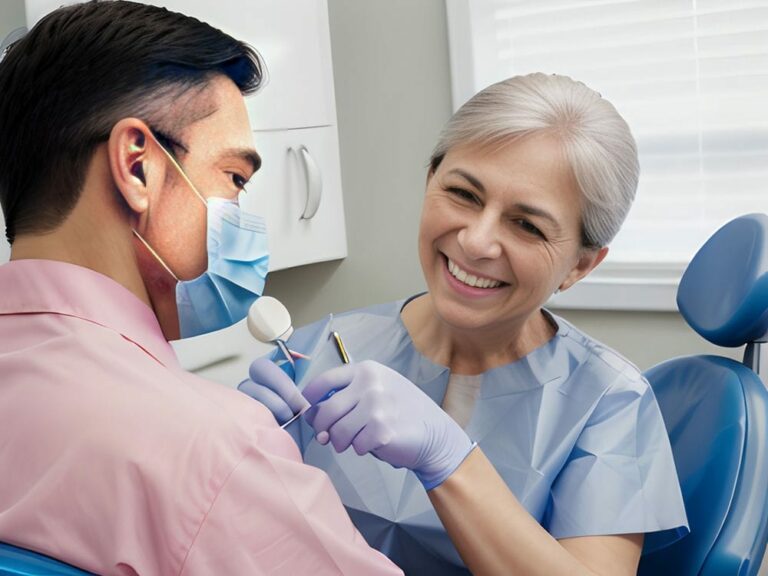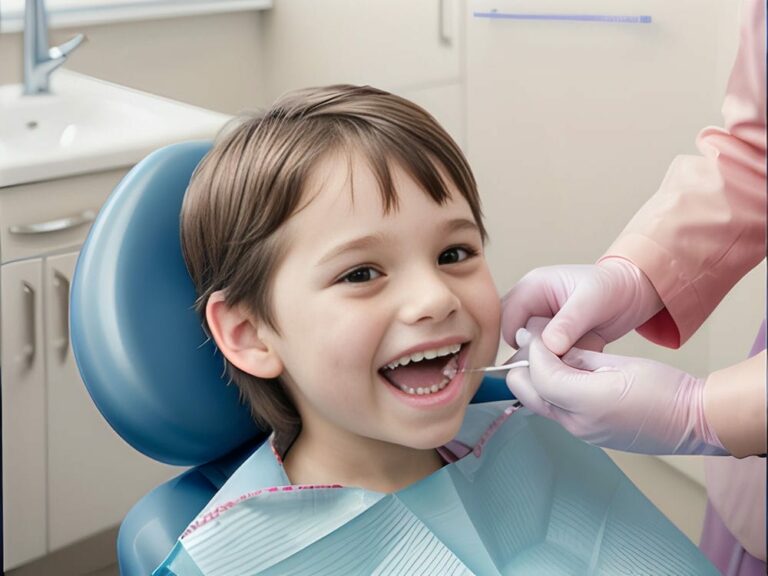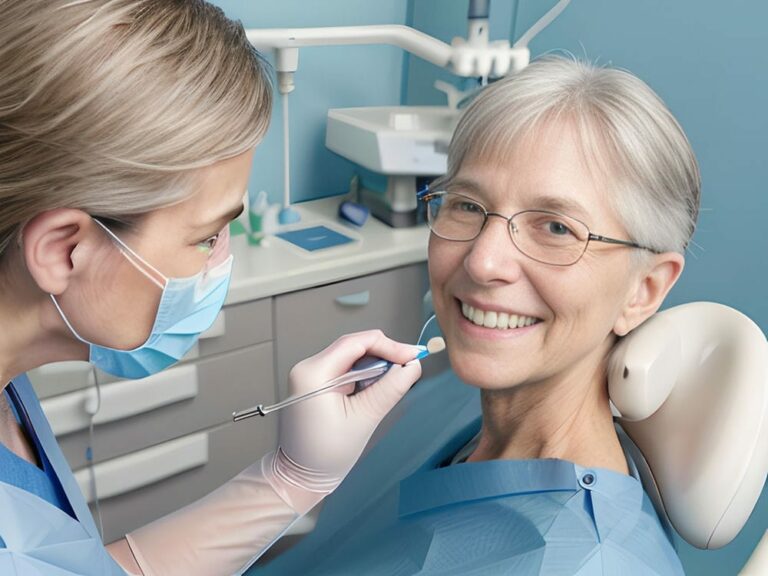Understanding the Role of Biotechnology in Dental Tissue Repair and Regeneration
Understanding the Role of Biotechnology in Dental Tissue Repair and Regeneration
In recent years, biotechnology has made significant advancements in the field of dental tissue repair and regeneration. This innovative approach combines principles from biology, engineering, and technology to improve the outcomes of various dental treatments. One area where biotechnology has had a profound impact is in the development of dental implants. These implants are now more durable, functional, and aesthetically pleasing thanks to advancements in biocompatible materials and surface modifications.
Another important application of biotechnology in dental tissue repair is through the use of nanotechnology. Nanoparticles have been utilized to enhance drug delivery systems, promote tissue regeneration, and control infection in dental procedures. By utilizing nanoparticles with precise sizes and properties, dentists are able to target specific areas for treatment with improved efficiency and precision. This has led to better outcomes for patients undergoing procedures such as root canal therapy or periodontal treatment.
One of the most promising aspects of biotechnology in dental tissue repair is its ability to stimulate bone regeneration. Traditional methods for bone grafting often require invasive procedures with limited success rates. However, through the use of growth factors, stem cells, and scaffolds derived from biotechnological techniques, dentists can now promote bone regeneration more effectively. This not only improves the success rates of procedures like dental implant placement but also reduces patient discomfort and recovery time.
The integration of biotechnology into dental tissue repair and regeneration has revolutionized the field by improving treatment outcomes and patient experiences. Dental implants are now more durable thanks to advancements in biocompatible materials and surface modifications achieved through biotechnological techniques. Nanoparticles have allowed for targeted drug delivery systems and enhanced tissue regeneration capabilities. Furthermore, the stimulation of bone regeneration using growth factors, stem cells, and scaffolds derived from biotechnological methods has significantly improved outcomes for patients requiring bone grafting procedures. As research continues to progress in this field, it is expected that biotechnology will play an even more prominent role in the future of dental tissue repair and regeneration.
Harnessing the Power of Stem Cells for Dental Tissue Regeneration
In recent years, biotechnology has made significant advancements in the field of dental tissue repair and regeneration. These innovations have improved the outcomes of various dental treatments, including the development of more durable and aesthetically pleasing dental implants. Additionally, nanotechnology has been utilized to enhance drug delivery systems, promote tissue regeneration, and control infection in dental procedures. Moreover, biotechnological techniques have allowed for more effective bone regeneration through the use of growth factors, stem cells, and scaffolds.
One area where biotechnology has had a profound impact is in the development of dental implants. Through advancements in biocompatible materials and surface modifications achieved through biotechnological techniques, these implants are now more durable, functional, and aesthetically pleasing. This has greatly improved the success rates of implant procedures and patient satisfaction.
Nanoparticles have also played a crucial role in dental tissue repair by enhancing drug delivery systems and promoting tissue regeneration. By utilizing nanoparticles with precise sizes and properties, dentists can target specific areas for treatment with improved efficiency and precision. This has led to better outcomes for patients undergoing procedures such as root canal therapy or periodontal treatment.
Furthermore, the stimulation of bone regeneration using growth factors, stem cells, and scaffolds derived from biotechnological methods has significantly improved outcomes for patients requiring bone grafting procedures. Traditional methods often required invasive procedures with limited success rates. However, through biotechnological techniques, dentists can now promote bone regeneration more effectively without compromising patient comfort.
As research continues to progress in this field, it is expected that biotechnology will play an even more prominent role in the future of dental tissue repair and regeneration. The integration of biotechnology into dentistry has revolutionized treatment outcomes and patient experiences by improving the durability of implants, enhancing drug delivery systems through nanoparticles, and stimulating effective bone regeneration through growth factors and stem cells. These advancements offer promising possibilities for dentin and pulp regeneration while providing better overall dental care.
Exploring Biomaterials for Enhanced Dental Tissue Repair
Biotechnology has also made significant contributions to the field of dental tissue repair and regeneration through the development of biomaterials. These materials play a crucial role in enhancing treatment outcomes and promoting the regeneration of dental tissues.
One area where biomaterials have shown great potential is in periodontal regeneration. Periodontal disease, which affects the tissues surrounding the teeth, can lead to tooth loss if left untreated. However, with the use of biomaterials such as scaffolds and growth factors, dentists can stimulate tissue regeneration and promote the healing process. This not only helps preserve natural teeth but also improves overall oral health.
Regenerative medicine has also benefited from advancements in biomaterials for dental tissue repair. Dental caries, or tooth decay, is a common oral health issue that often requires restorative treatments such as fillings or crowns. Biomaterials like bioactive glass and hydrogels have been developed to mimic natural tooth structures and promote dentin regeneration. By utilizing these innovative materials, dentists can provide more effective and long-lasting treatments for patients with dental caries.
Incorporating biomaterials into dental practice has revolutionized regenerative medicine by offering new possibilities for periodontal regeneration and improved treatment outcomes for dental caries. With continued advancements in biotechnology and material science, it is expected that even more innovative biomaterials will be developed to further enhance dental tissue repair and regeneration techniques.
The Potential of Dental Pulp in Regenerative Dentistry
One promising area of regenerative dentistry is the utilization of dental pulp for tissue repair. Dental pulp is the soft, living tissue found inside teeth that contains dental stem cells. These cells have the ability to differentiate into various cell types, making them valuable for regenerating damaged dental tissues.
Dental stem cells derived from dental pulp can be used to regenerate dentin, the hard tissue that makes up the bulk of a tooth. By isolating and culturing these stem cells, researchers have been able to generate new dentin-like structures in the laboratory. This breakthrough has significant implications for restorative dentistry, as it offers a more natural and long-lasting solution for repairing damaged teeth compared to traditional treatments like fillings or crowns.
In addition to their regenerative potential, dental pulp stem cells can also be used as a vehicle for drug delivery. These cells can be engineered to produce therapeutic molecules that promote tissue regeneration or combat inflammation and infection. By harnessing the drug-delivering capabilities of dental stem cells, researchers are developing new treatment approaches for oral health issues such as periodontal disease and tooth decay.
Overall, the use of dental pulp and its stem cells in regenerative dentistry holds great promise for improving oral health outcomes. With ongoing research and advancements in biotechnology, we can expect further developments in utilizing dental pulp as a source of tissue repair and regeneration in the future.
Advancements in Tooth Regeneration Through Biotechnology
One area of biotechnological advancement in dental tissue repair and regeneration is the use of dental biomarkers. These biomarkers are substances found in the dental pulp that can provide valuable information about the health and condition of the teeth. By analyzing these biomarkers, researchers can identify early signs of dental diseases and develop targeted treatments for better oral health outcomes. This approach has the potential to revolutionize preventive dentistry by allowing for early intervention and personalized treatment plans.
Another exciting development in biotechnology for dental tissue repair is the use of biomimetic materials. These materials are designed to mimic the natural structure and properties of dental tissues, such as enamel and dentin. By using biomimetic materials, researchers can create tooth-like structures that closely resemble natural teeth in terms of strength, durability, and aesthetics. This technology has the potential to replace traditional restorative materials like amalgam or composite resin with more biocompatible and long-lasting alternatives.
Tissue scaffolds are another important advancement in biotechnology for tooth regeneration. These scaffolds are three-dimensional structures that provide a framework for growing new dental tissues. By seeding dental stem cells onto these scaffolds, researchers can guide their growth into specific tissue types, such as dentin or enamel. This approach holds great promise for regenerating damaged or lost teeth, offering a more natural and permanent solution compared to current restorative options like implants or dentures.
With ongoing research and advancements in biotechnology, we can expect even more exciting developments in dental tissue repair and regeneration. The use of dental biomarkers, biomimetic materials, and tissue scaffolds demonstrate the potential for creating innovative solutions to improve oral health outcomes. By harnessing the power of biotechnology, we can pave the way for a future where regenerating damaged teeth becomes a routine procedure rather than an exception.
Gene Therapy: A Promising Approach for Dental Tissue Repair
Gene Therapy: A Promising Approach for Dental Tissue Repair
In recent years, gene therapy has emerged as a promising approach for dental tissue repair. This innovative technique involves the manipulation of genes within the dental pulp stem cells to promote the regeneration of damaged or decayed dental tissues. By targeting specific genes involved in tooth development and repair, researchers can potentially stimulate the growth of new dentin and enamel, leading to the restoration of tooth structure and function.
Dental tissue engineering is an important field within gene therapy that focuses on creating functional dental tissues in the laboratory. Researchers are exploring various techniques to enhance the regenerative potential of dental pulp stem cells, including gene delivery systems that can introduce therapeutic genes into these cells. By modifying the genetic makeup of these stem cells, scientists hope to enhance their ability to differentiate into specific dental tissue types, such as dentin-forming odontoblasts or enamel-producing ameloblasts.
Tooth decay is a prevalent oral health issue that affects millions of people worldwide. Traditional treatments for tooth decay often involve invasive procedures like drilling and filling cavities with restorative materials. However, with advancements in gene therapy, there is potential for more targeted and minimally invasive approaches to treating tooth decay. By harnessing the regenerative capabilities of dental pulp stem cells through gene therapy, it may be possible to stimulate the natural repair mechanisms within teeth and reverse early stages of decay without resorting to traditional restorative methods.
The field of gene therapy holds great promise for dental tissue repair and regeneration. With ongoing research and advancements in genetic engineering techniques, we may soon see more effective and personalized treatments for common dental problems like tooth decay. By harnessing the power of genes within our own dental pulp stem cells, we can unlock their full regenerative potential and pave the way for a future where natural tooth regeneration becomes a reality.
Overall, gene therapy offers an exciting avenue for advancing dental tissue repair and regeneration. By targeting specific genes and manipulating dental pulp stem cells, researchers can potentially stimulate the growth of new dental tissues, leading to improved oral health outcomes. With further research and development, gene therapy has the potential to revolutionize the field of dentistry and provide more effective and less invasive treatments for common dental problems like tooth decay.
How Tissue Engineering is Revolutionizing Dentistry
Bone grafts are a common procedure in dentistry to repair and regenerate damaged or lost bone tissue. However, traditional bone grafting techniques often involve harvesting bone from other parts of the body or using synthetic materials, which can be invasive and have limitations. With the advent of tissue engineering, there is now a more innovative and promising approach to bone grafting.
Tissue engineering involves creating functional tissues in the laboratory by combining cells, biomaterials, and growth factors. In the context of dental tissue repair, researchers are exploring various techniques to enhance the regenerative potential of dental stem cells for bone regeneration. By manipulating these cells and providing them with the necessary signals, scientists aim to stimulate their differentiation into osteoblasts, which are responsible for bone formation.
One area of focus in tissue engineering for dentistry is the development of bioactive scaffolds. These scaffolds provide a framework for stem cells to attach and grow while also releasing growth factors that promote their differentiation into bone-forming cells. By incorporating biocompatible materials into these scaffolds, researchers can create a conducive environment for tissue regeneration and guide the growth of new bone.
By leveraging the principles of tissue engineering, dentistry has entered a new era where regenerating dental tissues like bones becomes more feasible. Through advancements in stem cell research and biomaterial design, we may soon see more effective and less invasive approaches to repairing damaged or lost bone tissues in dentistry. The field of tissue engineering holds immense potential for revolutionizing dentistry and improving oral health outcomes for patients worldwide.
Applying Biotechnological Advances in Periodontal Tissue Regeneration
Tissue engineering is not only revolutionizing bone grafting techniques in dentistry but also holds great promise for regenerating periodontal tissues. Periodontal disease, which affects the supporting structures of the teeth, is a prevalent oral health issue that often leads to tooth loss. Traditional treatment approaches for periodontal tissue regeneration have had limited success, with outcomes often depending on the extent of tissue damage.
However, with advancements in biotechnology, researchers are exploring innovative strategies to enhance periodontal tissue regeneration. One approach involves using bioactive scaffolds similar to those used in bone tissue engineering. These scaffolds can provide a supportive environment for periodontal stem cells and aid in their differentiation into specialized cells that promote the growth of new periodontal tissues.
In addition to scaffolds, researchers are also investigating the use of growth factors and gene therapy in promoting periodontal tissue regeneration. Growth factors can stimulate cell proliferation and differentiation, while gene therapy involves introducing specific genes into target cells to enhance their regenerative capabilities. These biotechnological advances offer exciting possibilities for improving the effectiveness of periodontal disease treatment and ultimately preserving natural teeth.
The integration of biotechnological advances into periodontal tissue regeneration has the potential to transform dental care by providing more effective and minimally invasive treatment options for patients with periodontal disease. By harnessing the power of tissue engineering, dentistry can move towards a future where damaged or lost periodontal tissues can be repaired and regenerated naturally, leading to improved oral health outcomes for individuals worldwide.
Innovations in Guided Bone Regeneration Using Biotechnology
With advancements in biotechnology, researchers are exploring innovative strategies to enhance periodontal tissue regeneration. One approach involves using bioactive scaffolds similar to those used in bone tissue engineering. These scaffolds can provide a supportive environment for periodontal stem cells and aid in their differentiation into specialized cells that promote the growth of new periodontal tissues.
In addition to scaffolds, researchers are also investigating the use of growth factors and gene therapy in promoting periodontal tissue regeneration. Growth factors can stimulate cell proliferation and differentiation, while gene therapy involves introducing specific genes into target cells to enhance their regenerative capabilities. These biotechnological advances offer exciting possibilities for improving the effectiveness of periodontal disease treatment and ultimately preserving natural teeth.
The integration of biotechnological advances into periodontal tissue regeneration has the potential to transform dental care by providing more effective and minimally invasive treatment options for patients with periodontal disease. By harnessing the power of tissue engineering, dentistry can move towards a future where damaged or lost periodontal tissues can be repaired and regenerated naturally, leading to improved oral health outcomes for individuals worldwide.
The Future of Dental Tissue Repair and Regeneration: Opportunities and Challenges
The future of dental tissue repair and regeneration holds immense promise for improving oral health outcomes. The advancements in biotechnology have paved the way for innovative strategies that can enhance periodontal tissue regeneration. One such approach involves the use of bioactive scaffolds, which provide a supportive environment for periodontal stem cells to differentiate into specialized cells that promote the growth of new periodontal tissues. These scaffolds, similar to those used in bone tissue engineering, offer a potential solution for restoring damaged or lost periodontal tissues.
In addition to scaffolds, researchers are also exploring the use of growth factors and gene therapy in promoting periodontal tissue regeneration. Growth factors have the ability to stimulate cell proliferation and differentiation, thereby aiding in the regeneration process. Gene therapy, on the other hand, involves introducing specific genes into target cells to enhance their regenerative capabilities. These biotechnological advances hold great potential in improving the effectiveness of periodontal disease treatment and preserving natural teeth.
However, with these opportunities come certain challenges. One challenge is ensuring the long-term stability and functionality of regenerated periodontal tissues. The development of bioactive scaffolds that can mimic the complex structure and function of natural periodontal tissues is crucial for achieving successful tissue regeneration. Additionally, optimizing the delivery methods and dosages of growth factors and gene therapies is essential to ensure their efficacy without causing adverse effects.
The integration of biotechnological advances into dental care has the potential to revolutionize treatment options for patients with periodontal disease. By harnessing the power of tissue engineering, dentistry can move towards a future where damaged or lost periodontal tissues can be repaired and regenerated naturally. This would not only improve oral health outcomes but also enhance overall well-being by allowing individuals to maintain their natural teeth for longer periods of time.
FAQs
Q: What is biotechnological advances in dental tissue repair and regeneration?,
A: Biotechnological advances in dental tissue repair and regeneration refer to the use of modern biotechnology techniques to repair and regenerate damaged or lost dental tissues.,
Q: What are the benefits of biotechnological advances in dental tissue repair and regeneration?,
A: The benefits of biotechnological advances in dental tissue repair and regeneration include improved healing and regeneration of dental tissues, reduced need for invasive procedures, and enhanced long-term oral health outcomes.,
Q: How does biotechnological advances help in dental tissue repair and regeneration?,
A: Biotechnological advances help in dental tissue repair and regeneration by utilizing techniques such as tissue engineering, stem cell therapy, and gene therapy to stimulate the growth and regeneration of dental tissues.,
Q: What is tissue engineering in dental tissue repair and regeneration?,
A: Tissue engineering in dental tissue repair and regeneration involves the creation of artificial dental tissues using a combination of cells, scaffolds, and signaling molecules to promote tissue growth and regeneration.,
Q: How does stem cell therapy contribute to dental tissue repair and regeneration?,
A: Stem cell therapy contributes to dental tissue repair and regeneration by using stem cells to promote the growth and regeneration of dental tissues, such as dentin, pulp, and periodontal ligament.,
Q: What is gene therapy in dental tissue repair and regeneration?,
A: Gene therapy in dental tissue repair and regeneration involves the delivery of specific genes to dental tissues to promote their repair and regeneration, potentially allowing for the growth of new teeth.,
Q: Are there any risks associated with biotechnological advances in dental tissue repair and regeneration?,
A: While biotechnological advances in dental tissue repair and regeneration show great promise, there can be risks associated with these techniques, such as immune rejection, improper integration of implanted tissues, and potential long-term effects on oral health.,
Q: How long does it take for dental tissues to regenerate using biotechnological advances?,
A: The time it takes for dental tissues to regenerate using biotechnological advances can vary depending on the specific technique used, the extent of the damage, and individual patient factors. It can range from several weeks to several months.,
Q: Can biotechnological advances in dental tissue repair and regeneration be used for cosmetic purposes?,
A: Yes, biotechnological advances in dental tissue repair and regeneration can be used for cosmetic purposes, such as repairing damaged or lost teeth, improving the appearance of the smile, and addressing other aesthetic concerns.,
Q: Are biotechnological advances in dental tissue repair and regeneration widely available?,
A: While biotechnological advances in dental tissue repair and regeneration are still relatively new, they are becoming more widely available as research and development in this field continues. However, their availability may vary depending on the location and the specific dental clinic or research institution.




















